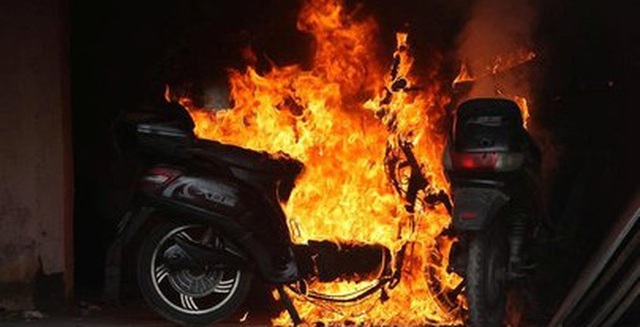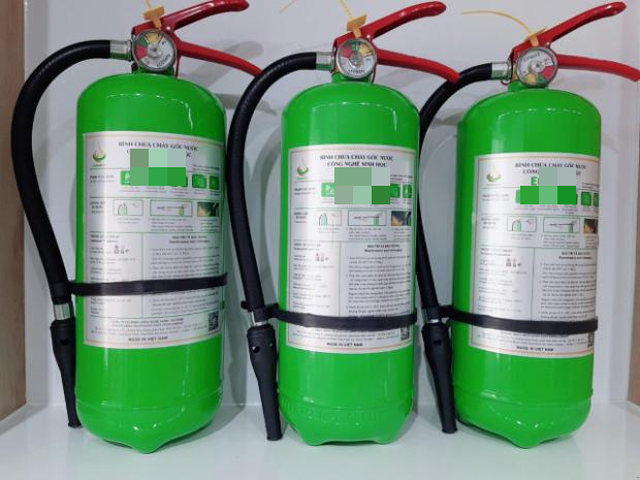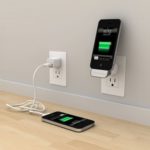Recent fires and explosions have been caused by negligence, overnight charging, or electrical faults. Two notable incidents include a fire caused by an electric bike battery explosion that killed two people in Sam Son, Thanh Hoa on July 12, 2023, and another fire on July 19, 2023, in Ngai Cau, An Khanh, Hoai Duc, Hanoi, which claimed three lives and involved an electric bike and motorcycle business.
Motorized and electric bikes are particularly susceptible to fires and explosions due to several factors. First, as explained by Senior Lieutenant Colonel Tran Van Dong of the University of Fire Fighting and Prevention, overloading can lead to increased heat, causing electrical components to malfunction and potentially ignite. Second, the charging process itself can generate excessive heat, especially if the battery is not properly maintained, is old, or has faulty circuits.
A common thread in many of these incidents is the negligence and improper use of electrical vehicles by their owners. Leaving electric vehicles charging overnight without supervision, charging immediately after use or while the battery is still hot, and charging in damp conditions after riding in the rain are all unsafe practices. Furthermore, not all homes or mini-apartments have electrical systems that can safely accommodate charging needs.

Illustrative image
With the increasing popularity of electric bikes and motorcycles as a convenient mode of transportation, there are now over 3 million of these vehicles on the roads in Vietnam. This raises concerns about fire safety, especially in basements and mini-apartments where multiple electric vehicles may be parked or charged simultaneously.
To ensure safety in homes and mini-apartments with electric bikes and motorcycles, keep the following five guidelines in mind:
1. Understand the technical specifications: Know the power output of your battery (40, 60, or 80W), how the fuse system works, the recommended charging time, and any special considerations for charging.
2. Pay attention to the vehicle’s battery:
Most electric bikes use lithium-ion rechargeable batteries, the same type found in smartphones, headphones, and laptops. These batteries are prone to overheating and catching fire if damaged, overcharged, or operated in extreme temperatures. Since electric bike batteries are much larger than those in personal electronic devices, the potential for fire and explosion is significantly higher.
To mitigate this risk, always use the original battery and charger provided with your vehicle. If you need to purchase a replacement, stick to the same brand. Regularly inspect the battery and charging port for signs of wear and tear. If you notice frayed wires on the charger or a swollen battery, stop using it immediately. It is also important to limit charging sessions to 5-6 hours and avoid leaving your vehicle charging unattended overnight.
3. Designated charging area: Establish a specific area for charging your electric vehicle, away from damp or sunny locations. Ensure that the charging equipment matches the power source, and for apartment buildings, have a 24-hour staff presence with easy access to fire-fighting equipment.
4. Regular maintenance: Inspect and maintain your electric vehicle every three months to identify and address any potential issues.
5. What to do in case of a fire: According to experts, fires caused by electric vehicle batteries can be controlled if detected early. In the event of a fire, immediately cut off the power supply to the affected area. Alert everyone in the building to evacuate and contact the fire department.
Do not use water to extinguish the fire, as it can cause an explosion due to the high temperature turning water into hydrogen. Instead, use fire extinguishers containing liquid carbon dioxide, which can lower the temperature and penetrate deep into the fire, disrupting the chemical reactions. Lithium batteries, commonly used in electric bikes and motorcycles, can burn without oxygen through internal chemical reactions, making traditional fire-fighting methods less effective.

Use a water-based fire extinguisher with molecular coating technology
In the event of a fire involving electric vehicle batteries, it is recommended to use a water-based fire extinguisher with molecular coating technology to rapidly reduce the temperature and suppress the fire. While these extinguishers may be more expensive, they are a worthwhile investment for homes and mini-apartments with electric vehicles.
1. Dedicated Charging Space: Establish a designated parking spot with proper ventilation and easy access to a charging station. This ensures a consistent and safe charging environment.
2.
Use a Charging Station with Overload Protection: Invest in a high-quality charging station that has built-in overload protection. This feature safeguards against electrical overloads and reduces fire risks.
3. Keep the Area Clear: Maintain a clutter-free zone around the charging EV to prevent tripping hazards and ensure easy access to the vehicle and charging equipment in case of an emergency.
4. Monitor the Charging Process: Stay vigilant during charging. Regularly inspect the charging cable for any signs of damage or wear and tear, and always unplug the charger from the vehicle before disconnecting it from the power source.
5. Follow Fire Safety Protocols: Have a fire extinguisher easily accessible near the charging area and ensure you know how to use it properly. Additionally, install smoke detectors and carbon monoxide alarms for early warning in case of any issues.
Does charging your phone overnight cause it to explode
Overnight phone charging has been a concern for many users, as they worry about the risk of the phone exploding. Not everyone is knowledgeable about the practice of overnight charging and its potential dangers.



































